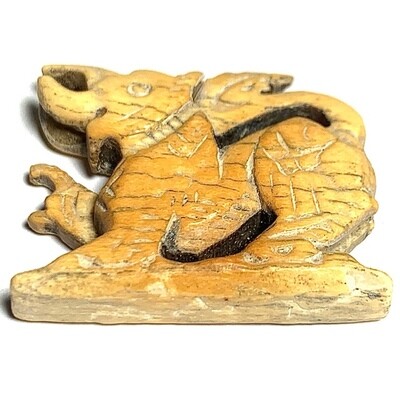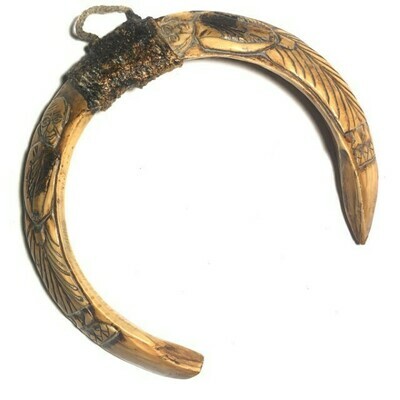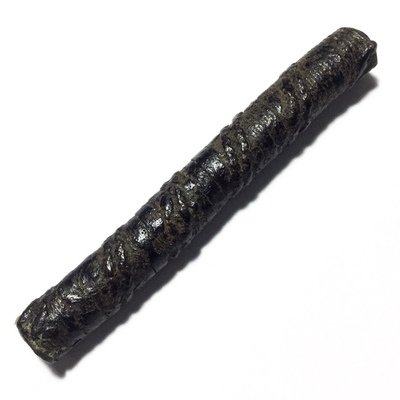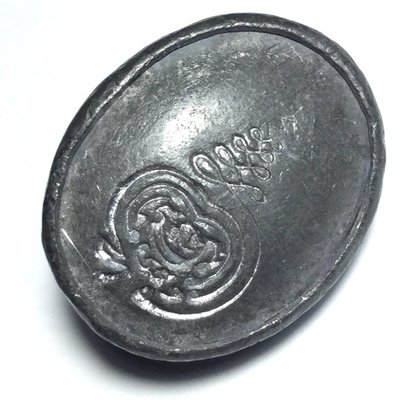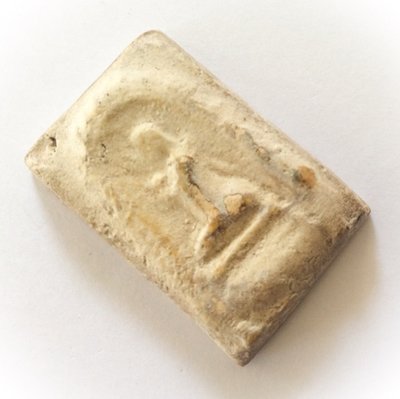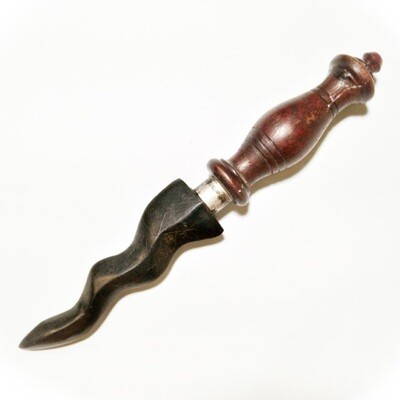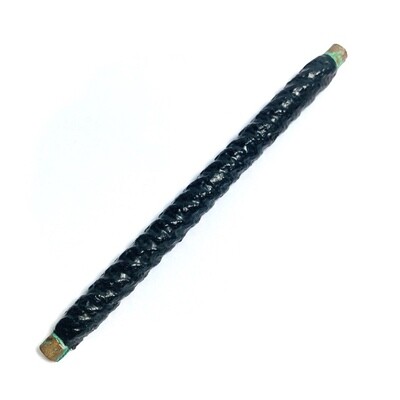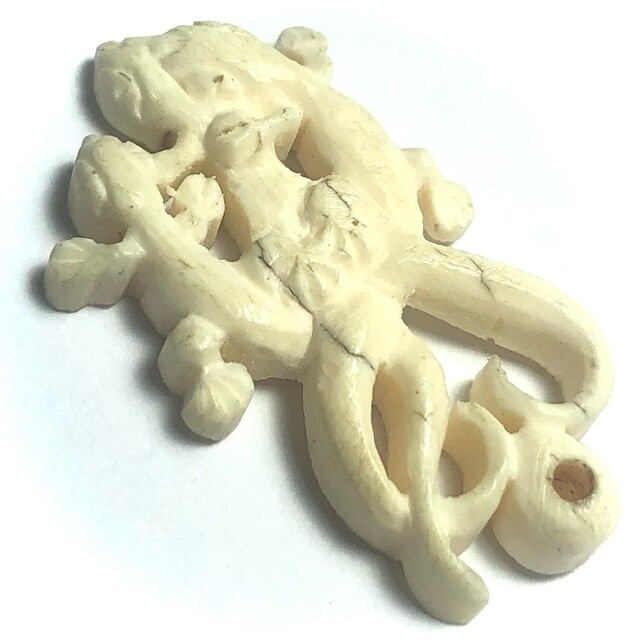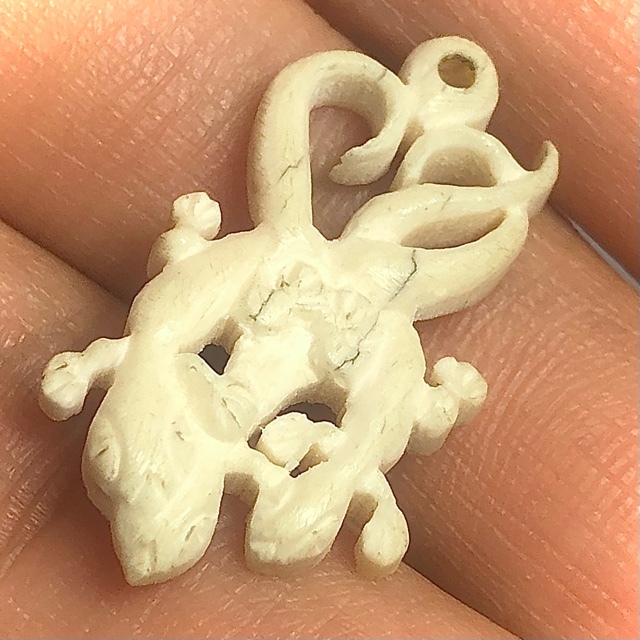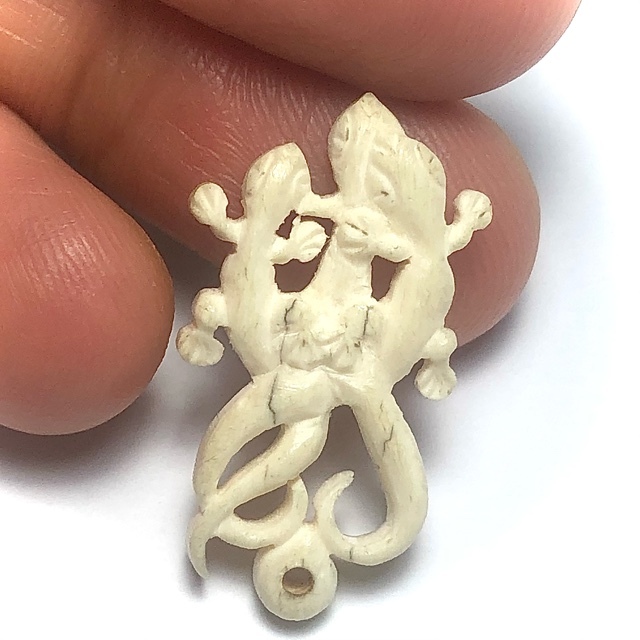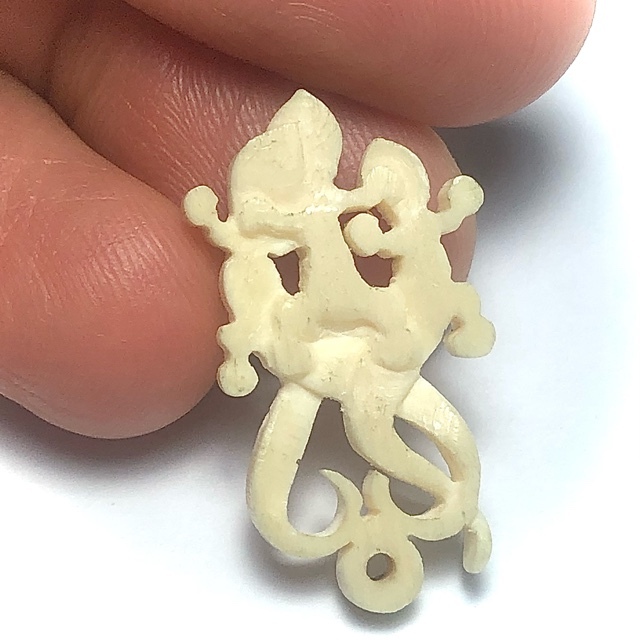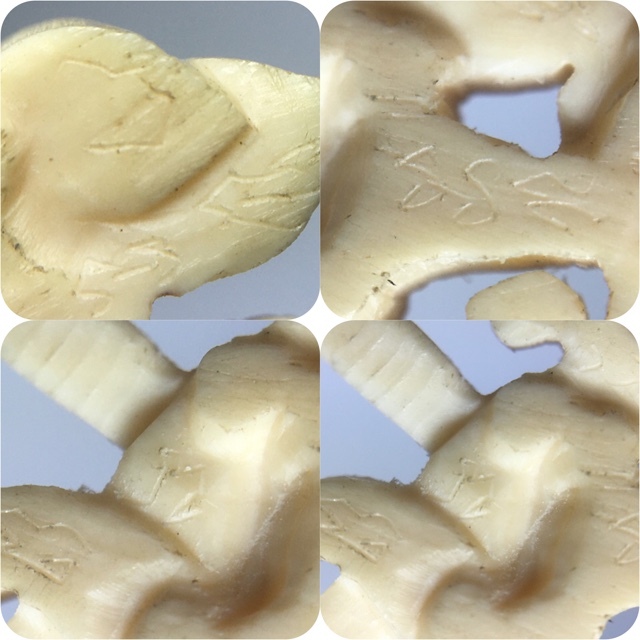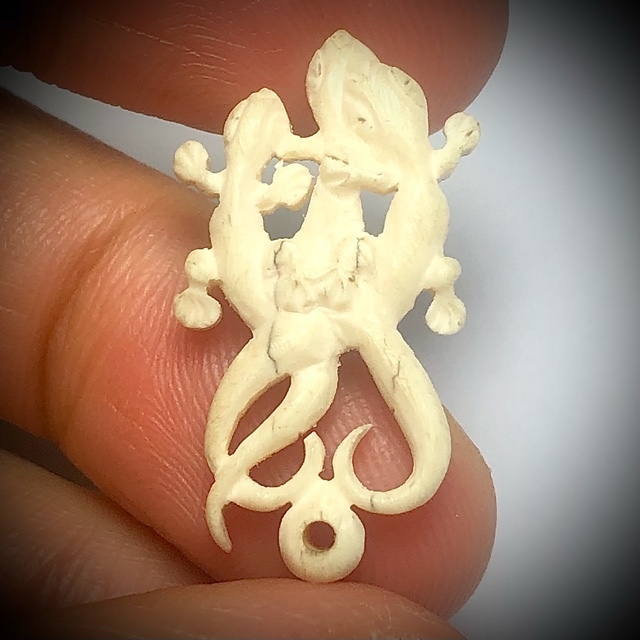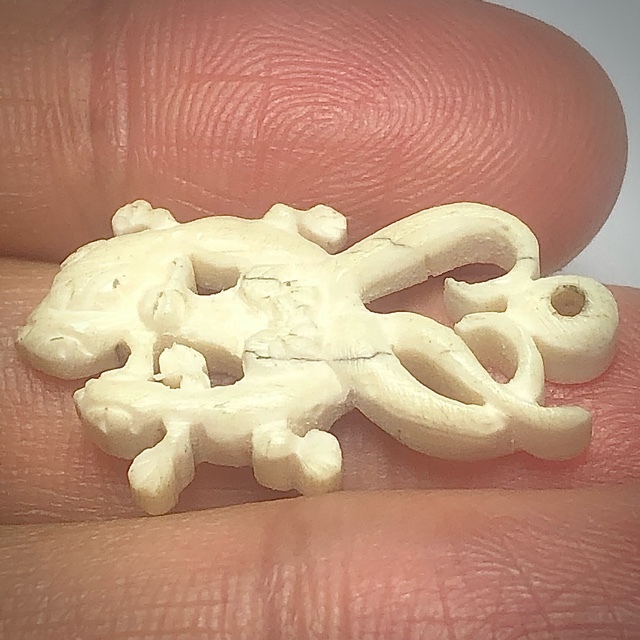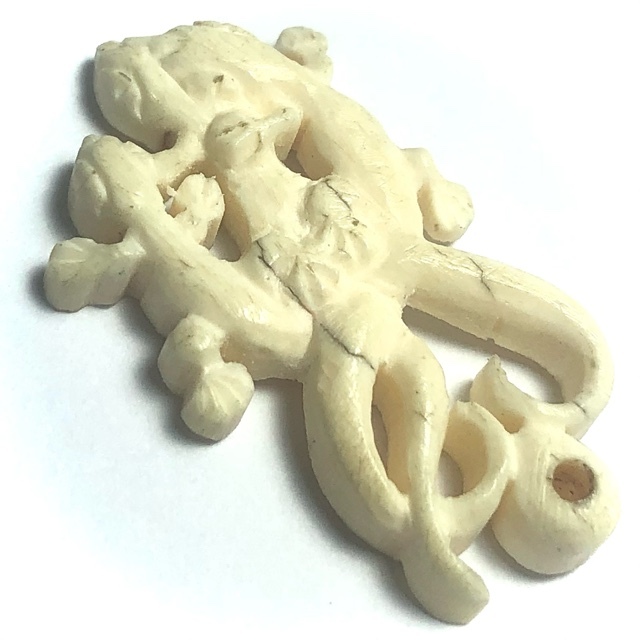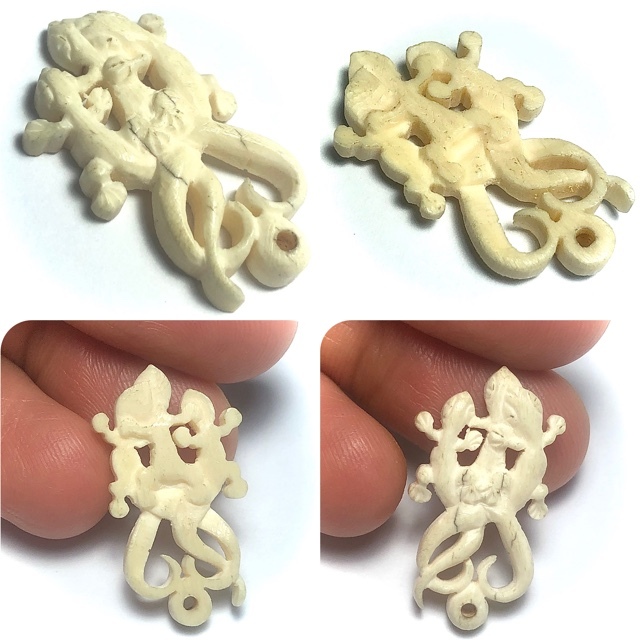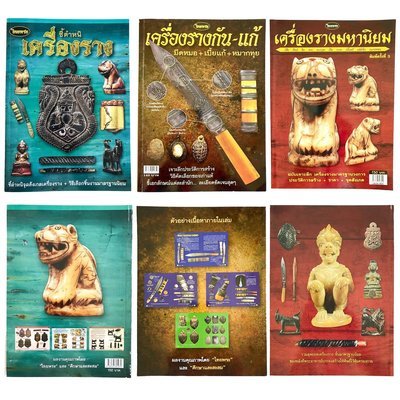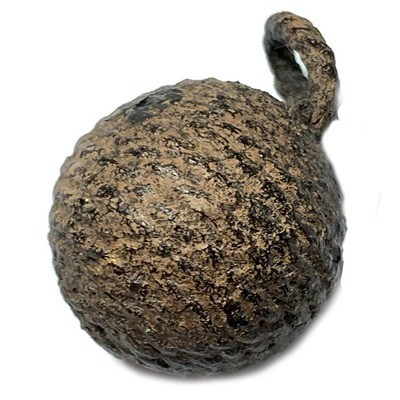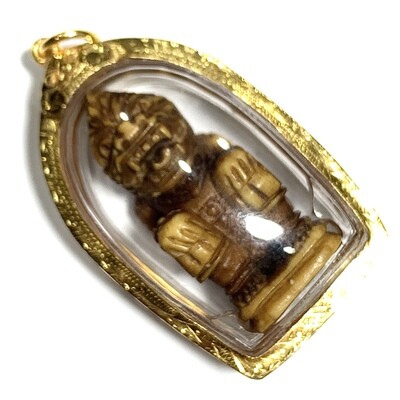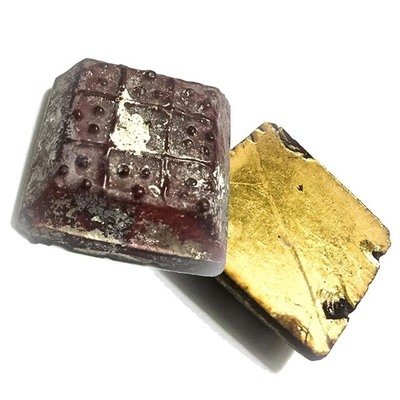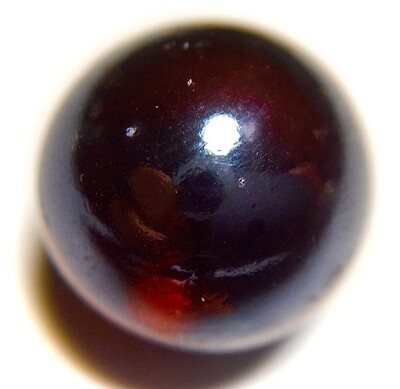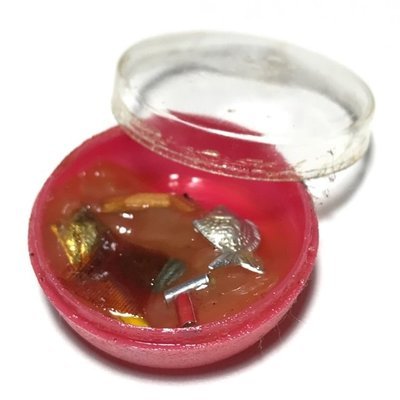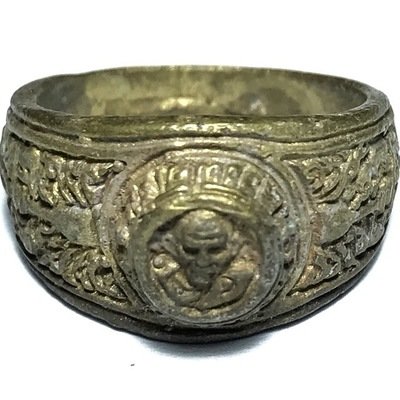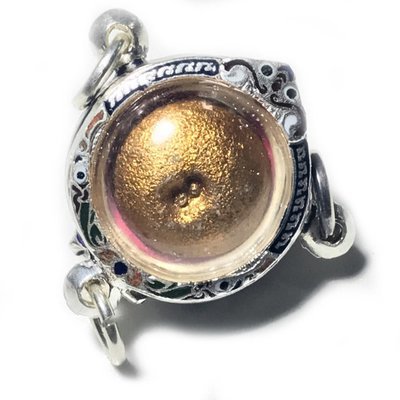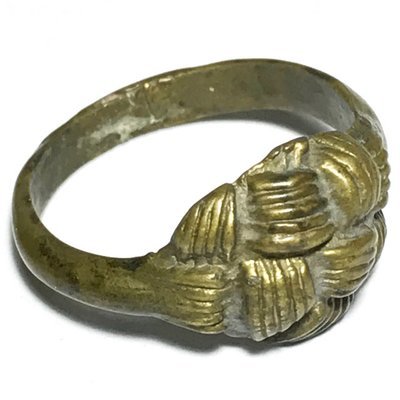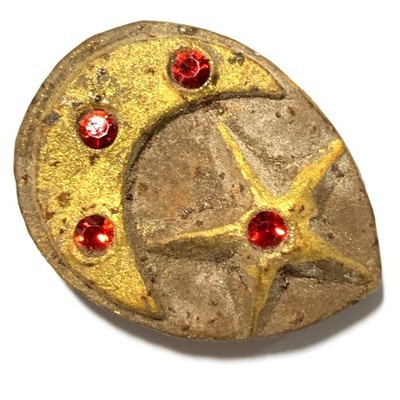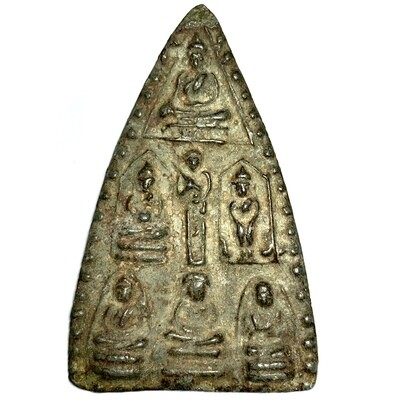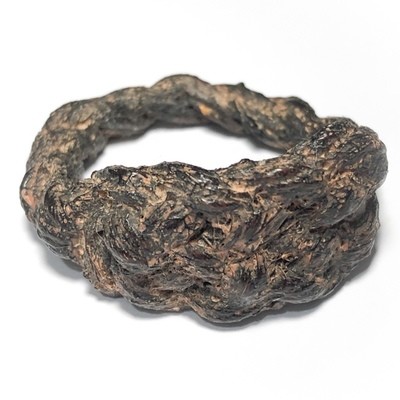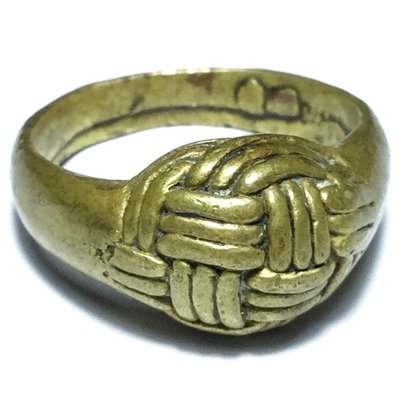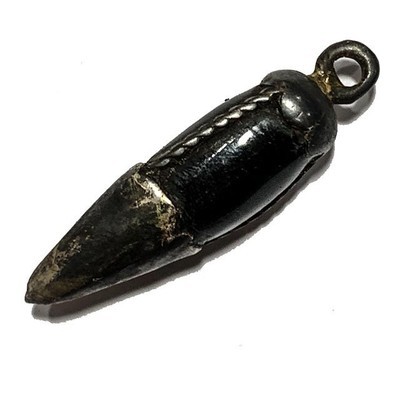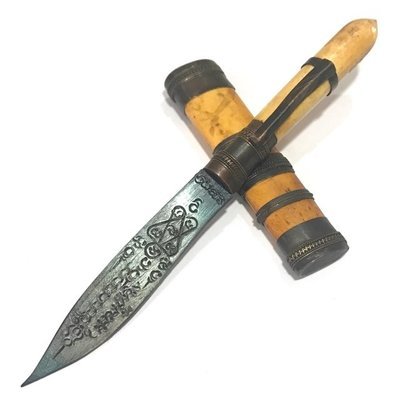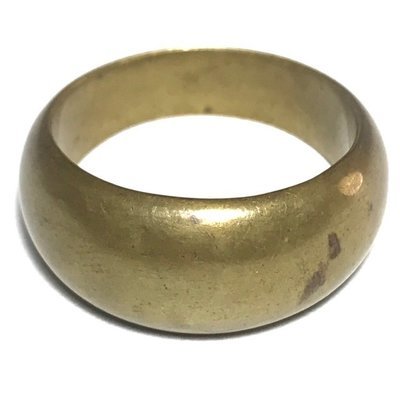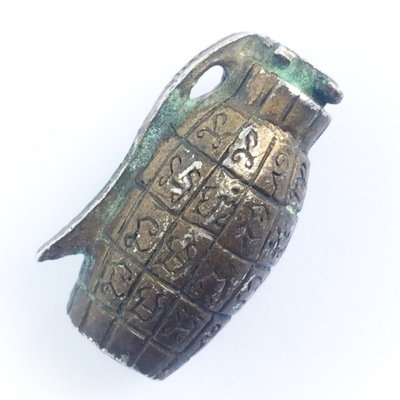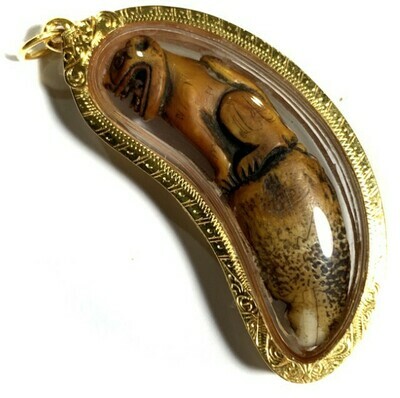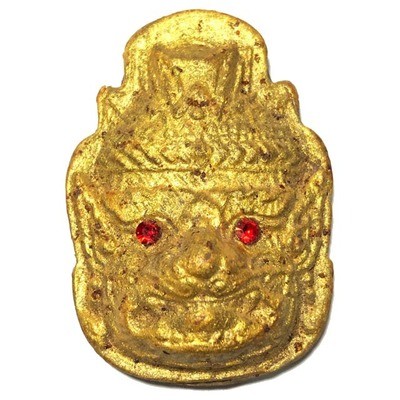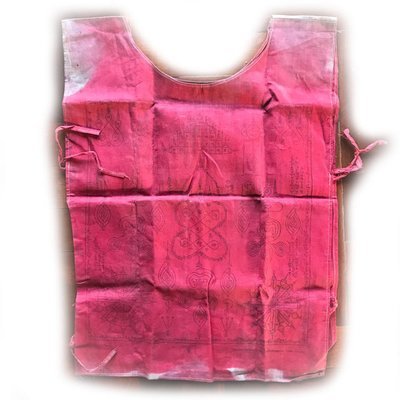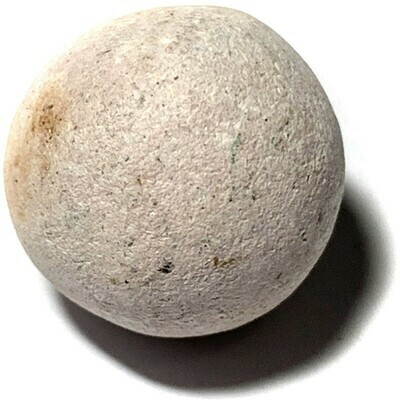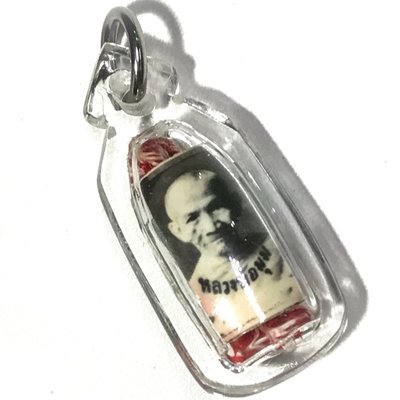A pristinely kept and extremely rare Rian Mangorn Koo Nuea Nava Loha Pim Pised Dtok Sorng Code Ma Wat Pha Nong Lom Run Sao Ha Maha Sethee 5th Lunar Saturday Blessing Ceremony Edition Guru Monk Coin, released in 2543 BE, to raise funds for the Kuti Songk Monks Huts and improve the facilities at the temple of Wat Pha Nong Lom.
This model of Rian Mangorn Koo twin dragons Monk Coin is a very rare Pim Pised (Niyom preferred) and differs from the majority of Rian Mangorn Koo Wat Pha Nong Lom Edition coins in Nava Loha, because of the double code MA stamp. Most coins of the Nava Loha series made for Wat Pha Nong Lom have only a single code Ma Stamp (on the Sangkati chest sash of the robe of Luang Phu), and only the Pim Pised special models received double code stamps. Only very few (unknown number) were distributed with double code stamp, making this not only a sacred, powerful master class amulet, but also a rare collectors piece.
The Rian Mangorn Koo of Luang Phu Hmun is, as are all of his amulets, known for the power of Jaroen Lap Wealth Increasement, and Lucky Fortunes, as well as for their Miraculous Protective Powers. Those born in the year of the dragon love to Bucha this amulet especially, for the obvious reason of the double dragon guardians.
For those with lower budgets, who seek power above collectability and rarity, we recommend to seek the Rian Mangorn Nuea Tong Daeng or Nava Loha single Code Ma, of the same edition, which carries a lower price than this special Nava Loha Pim Pised Gammagarn double code collectors edition model.
Jing Jok Bee 3 Hang Maha Sanaeh Ivory Gecko Amulet Luang Phu Nai Wat Ban Jaeng
Rare triple entwined geckos version, of a beautifully hand carved highly detailed miniature Jing Jok Bee Maha Sanaeh amulet, hand inscribed with Khom Agkhara Spells, from the Great Luang Phu Nai (2446 - 2531 BE), of Wat Ban Jaeng . The amulet is fashioned in highly fine detail from one of Luang Phu Nai's top artisans, forming a Sacred hand carved pair of miniature white ivory Geckos entwined in nuptials, with tails touching in heart-shape. A classic Niyom (preferred) category amulet of a Master, who is arguably the Greatest Master of all time for the Wicha Jing Jok, Luang Phu Nai, of Wat Ban Jaeng. Highly recommendable for Gamblers, Seducers, ladies and children too, for its low weight and small size.
This particular manifestation of the heavenly gecko is a Jing Jok Bee Sam Dtua Sam Hang (triple geckos entwined in mating), and shows itself to be mid-era, from the appearance of the ubiquitous parallel fractures in the surface of the ivory, which deepen with age, as does the patina (depending on how many years of skin contact and sweat, wiill influence if ivory changes from creamy-white, to golden yellow - if no skin contact is applied to an amulet for example by encasement, then it will hardly ever change its tone and Patina). The Jing Jok is empowered primarily as a Maha Sanaeh Seduction and Metta Mahaniyom Mercy Charm, with additional Maha Lap Magic, and the Ubiquitous Anti Black Magick effect which is present with all Geckos. The Gecko charm possesses powerful Anti Black Magick, Maha Sanaeh, and Metta Mahaniyom power.
The Jing Jok is a very popular amulet in Thailand with both Male and female devotees, probably not only due to its great power to attract wealth and admirers, lovers and money, and protect from Black Magic and Evil Spirits, but most probably also because of the easiness of use, which makes the Jing Jok a powerful Magical tool which needs little extra work to coax into performing its duty.
The Jing Jok Gecko is as deceptive as an amulet, as it is in real life, because it looks pretty harmless, but in fact, its ability to enter wherever it wishes, eat what it wants. The Gecko knows how to survive in all circumstances, and is almost second to none in catching its prey with the minimum of effort, laying in wait for the prey to fly or crawl into reach, and then snapping it up.
Its invisibility though camouflage, and its harmless appearance, and agile physique, allow it to evade the glance of its potential hunters, and to escape them easily if they do happen to approach. The Jingjok is the most desired and collected amulet types coming from Luang Phu Nai. Jiing Jok Luang Phu Nai are the most nationally and internationally famous Gecko amulet of all the Pantheon of Thai Classic Pra Niyom in History to Date, belonging to the 'Krueang Rang' (Talismans and Charms) Category of High End Masterpieces.

Above; an Early Era Jing Jok Bee (mating Geckos) amulet with heart shaped entwined tails, from the Great Luang Phu Nai, of Wat Ban Jaeng.
He made Jing Jok Gecko charms in many different substances including Galabangha Dam (black coral), Mai Saksit (Sacred Tree woods), Nga Chang (Ivory), Khao Kwai (Horn) and Graduk Gae (bone). You can see some other classic examples of Luang Phu Nai Gecko amulets, in the above and below pictures, for your perusal and study.
Below; Another example of a single Jing Jok carving of LP Nai

This Talisman uses the Wicha Jingjok Ngern Thung Tong as well as the Jing Jok Sam Hang - a Sacred Yantra magick spell using Khom Agkhara, carved into an Gecko shaped animist effigy. This particular version is known as "Jingjok Ngern Thung Tong" (silver gecko with gold sack in mouth).
Luang Phu Nai was a previous generation olden days master of Sak Yant Thai Temple Tattoos, and a master amulet maker, especially renowned for his carved sacred gecko charms, as well as many other Amulets. His life as a Buddhist Monk is highly documented with many different authorships of his Biography and life's works.

His amulets are equally documented and highly prized with collectors of this Genre of Masterpiece Amulet, and the Jing Jok Luang Phu Nai can be found in almost every high class Amulet Magazine, and Encyclopedic Work of importance ever published. Considered by most people to be the number one Gecko Talisman of all time.
Below, hand inscriptions are visible on the ivory surface, from LP Nai, with the invocations of the Jing Jok Bee Sam Dtua Sam Hang
The legends of Luang Phu Nai's powers extended into the world of Sak Yant Thai Temple Tattoos, and Devotees of the Occult, and Buddhist Amulets, and the Faithful Followers of Luang Phu Nai's Buddhist Practice and teachings.
Luang Phu Nai was born in the year 2446 BE, and Ordained early in his childhood as a Samanera novice Monk, at the age of 12 years old, and hence never lost his purity. Then later, at the age of 22, he was ordained to the highest status of a fully ordained 'Bhikkhu' (that is to say, a fully fledged Buddhist monk). He remained Ordained and Pure from the age of 12 within the Buddhist Sangha, until the day he passed away in the year 2553 BE.
He was able to travel to Wat Pak Klong Makham Tao temple to study Sorcery and Buddha Magic with the great Luang Phu Sukh, and even met Grom Luang Chumporn the Royal Admiral Princely Lord, who taught him the missing parts of Wicha which had been left unstudied when Luang Phu Suk passed away.
Apart from the famously powerful Gecko Charms from this Great Master Guru Monk, Luang Phu Nai has also great fame for his Takrut Tone and Takrut Maha Ud amulets, and his Pra Buddha Kotama (Pra Putta Kodom) and Pra Mokkhallā (Maugdalyana Arahant) amulets (both models in small and large versions) and his Metallic Monk Coin amulets, all enjoy a highly revered and top rankiing position in the Amulet Appreciation Societies.
His Sak Yant Thai Temple Tattoos were and still are legendary, for their authentic Maha Ud, Kong Grapan Chadtri, and Klaew Klaad power.

Simple Kata Chanting is enough normally to induce the power of the Jing Jok to attract lovers and customers, or to prevent Black Magic attacks. There are a multitude of different Wicha, and a large array of different shapes and sizes of Jing Jok used for different kinds of spells.
Mostly they are of the Maha Sanaeh and Metta variety, but there are also pro-active Gecko amulets as well as those intended for more protective purposes, depending on the construction and empowerment of the spell.
The ‘Jing Jok’ (Gecko) is a Magical Animal that has dominated Thai Mythical beliefs, since the Pre Buddhist Times of Animism. In Olden Times, Thai people would say that if you hear a Gecko greet you, when you walk out of the house to go out, that you will be befallen by good luck. It is believed the sound of the Gecko will bless you to have all the boys or girls you want running after you, have lucky windfalls, and other auspicious blessings.The Gecko is also a powerful protection against Black Magic, for the Sorcery within the Gecko itself is so high, as to prevent any other Dark Sorcery from entering the sphere.
The Jing Jok is a highly reputed amulet used for increasing your Gambling Fortunes, and is one of the favorite talismans of the perpetual gambler. Its power to improve Business Talks and Commerce (sales), is Famous. In addition, the Jing Jok is pure Metta Maha Niyom, and Maha Sanaeh, and has been the favorite Love Charm of many generations of Thai people, and seems to be holding its place as the most popular Love, Commerce and Gambling charm.
The Jing Jok is however not only able to bring Lucky Fortunes and Love to its owner, but is also powerfully endowed with Kong Grapan Magic to protect from deadly accidents and harmful attacks. Anti Black Magic is inherent within the Gecko Wicha too, and keeps any Curses or Dark Sorcery at Bay.
Kata Jing Jok – Luang Phu Nai
Chant Maha Namasakara 3 Times to Lord Buddha First (Namo Tassa). Then Chant;
A I A MA A MA A I JA HANG A MA SWAA HA NA MA PA TA TA PA NA MA
Kata Jing Jok Bee
A I A MA A MA A I A HANG JA MA BPI JA SAWAA HA NA MA PA TA
(Chant 3 Times)
Alternative Kata
Ga Bpa Ga Ju Ju Jo Jo (O pronounced as in ‘Dot’) A I A Ma A Ma A I A Hang A Ma Swaaha Na Ma
Alternative Kata
Na Ma Am A Na Orn Aa Na Ma Haa Guu Namaa Momaa Mid Mid Mam mam Mim Mim Maa Ni Maa Na Ma Pa Ta
Kata Jing Jok Sorng Hang (2 tailed gecko)
Sittigijjang Sittiwaajang Sittigammang Sitti Dtathaakadto Sitti Dtaecho Ja Yonijjang Sittilaapo Nirandtarang Sittiwantaa Namaa Mihang Sappa Sitti Pawandtumae
Kata Jing Jok Metta Mahaniyom (Luang Por Lum)
Na Mettaa Ma Haa Niyom Mo Cheuy Chom A Niyom Mettaa Putta Raksaa Taa Niyom Ya Cheuy Chom A Niyom Mettaa Pra Arahang Rak Mai tree Mettaa Pra Mokallaa Yandti
